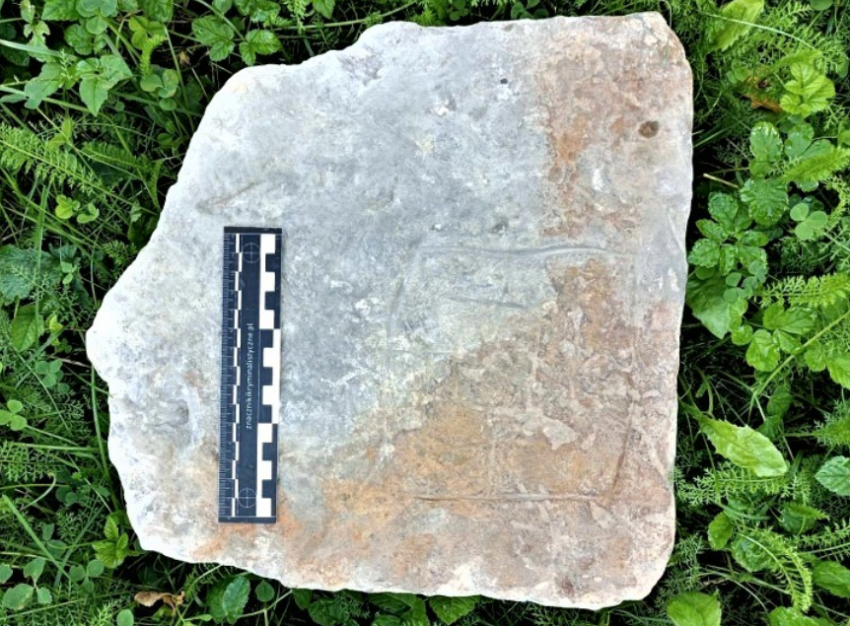A medieval board game carved in stone was discovered in a 16th-century castle in Ćmielów, Poland. It is thought to be around 500 years old. Carved into a sandstone floor slab by the castle’s first builders, the game was discovered by archaeologist Tomasz Olszacki.
Olszacki told National Geographic Polska that the game, which measures about 13.5 centimeters in length and width, could have been carved by construction workers who wanted to gamble their earnings in their spare time. Alternatively, it could have been carved by children or servants in later years.
The name of the game, whose origins are still unclear, seems to be “Mill”. The game is thought to have ancient origins, it was played by the Romans and Confucius is thought to have been a player.
Contested between two players, it was also known as ‘Nine Men’s Morris’, ‘Merels’ and ‘ninepenny marl’. Despite its ancient origins, the game rose to prominence during the Middle Ages, particularly in England, with stone-carved boards found in cathedrals in Canterbury, Chester, Westminster, Gloucester, Norwich, and Salisbury. Others were found in Italy and inside castles built by the Crusaders.
This is not the first time the game has been discovered in Poland; previously, a board was discovered in a 13th century church in Opole, and depictions of people playing the game were discovered inscribed on 15th century stove tiles in Wielkopolska.
The most recent turn in the tale of the castle is Olszacki’s discovery. Krzysztof Szydowiecki, a local nobleman, had it built between 1519 and 1531. It was taken during the Swedish Deluge and thereafter changed hands multiple times.
By 1800, a large portion of it had been transformed into a brewery. In 1905, it was transformed into a bathhouse, and in 1944, it was used as a German military hospital.
It was privately purchased in 2009, went into decline, and was then repurchased by a Gdask businessman in 2022. More recently, it was subjected to archaeological investigation and the extraordinary discovery of the medieval board game was made.
